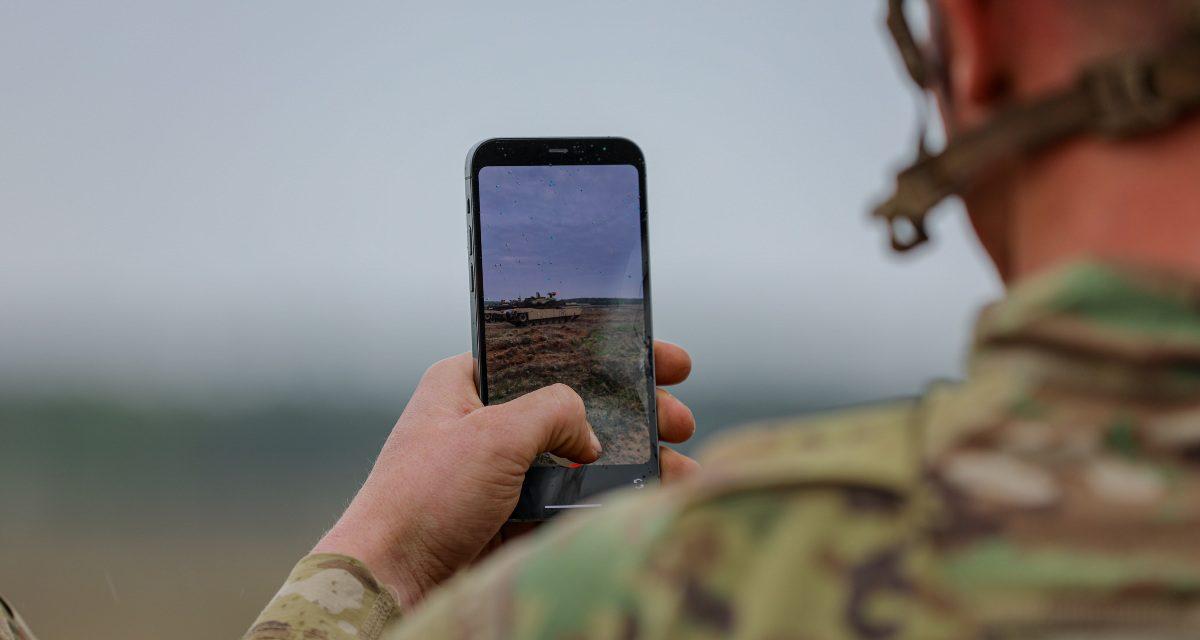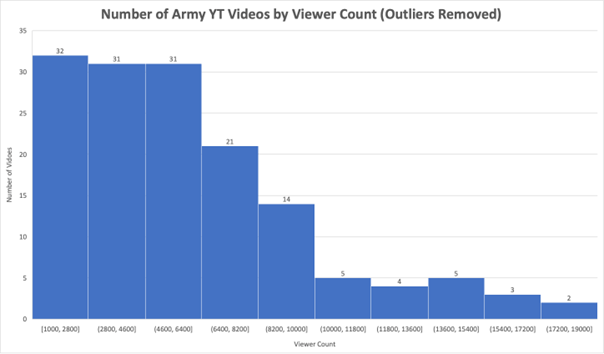Jonathan Li and Max Xie

Different people will point to different root causes of the Army’s recruitment issues. Some will say that the increasingly lucrative civilian job market draws talent away from the military. Others will say that patriotism in America is on the decline. Another opinion may blame incidents of poor living conditions and dining facilities. Still others will argue that unadaptable leadership is driving the younger generation away from joining. The potential causes are obvious, but the solution is difficult to pinpoint. Although there is no easy way to tackle any of these issues in a swift manner, one aspect of today’s recruitment environment remains very clear: social media continues to greatly influence public opinion and has become one of the premier ways for organizations to interact with the general public.
Why does social media matter? Simply put, the military recruitment problem is not something that the public is currently concerned about. The ongoing presidential campaign gives us a glimpse of the issues that are on the forefront of American minds. The issues discussed by presidential hopefuls include tax policy, the war in Ukraine, abortion rights, and education. Anyone hoping to see any mention of military recruitment woes would be disappointed. The lack of public concern for recruitment issues is hampering the military’s efforts to address the root causes mentioned earlier. Increased monetary incentives and improved logistical efficiencies require the support of Congress and government leaders.
Without a significant public push, change will always be difficult to implement. In order to combat the lack of public awareness, the Army should fine-tune the way it interacts through social media. Increased positive public interaction will lead to increased recruitment in the future. The key to doing so is a set of actionable initiatives and a better strategy to more effectively reach the Army’s target audience.
A Digital Media Content Strategy
The Army offers a useful case study on how we can utilize existing resources to revamp digital content. To better connect with audiences, the service needs a digital promotion strategy that drives organic growth in viewers and reach and fosters a more interconnected and collaborative environment between organizations within the Army and even across the joint force. We recommend the following:
- Steer away from self-promoting marketing content and focus on content that can contribute to the public interest.
- Leverage resources from existing partnerships (e.g., the Modern War Institute, Fort Moore’s Goizueta MBA Fellowship).
The main goal of this content strategy will be to have the military directly and positively influence the American community.
Problems with the Current Approach
Videos are the most engaging form of social media content; however, the general public is conscious of advertisement tactics and responds negatively to content that is overtly self-promotional. This negative response is often evidenced by the large amounts of comments on such content that further influence the opinions of new viewers. As an example, we can look no further than the comments on the Army’s own “Be All You Can Be” video posted on YouTube. A quick glance at the top comments of the video will show anyone that viewers are not only hyper-aware of advertisement, but also highly critical of obvious advertisement attempts.
We conducted a review of the 115 videos posted since May 19, 2022 on the GoArmy YouTube channel and found all to fall in the realm of self-promotion. We further conducted a review of the 165 videos posted since June 15, 2022 on the official US Army YouTube channel and found that only eight videos are not easily identifiable self-promotion attempts: “The Darby 40 Mile Trek,” “The Battle of Bunker Hill,” the three videos in a Medal of Honor recipient series, the two parts of the “Stories of Hope” series, and “D-Day: Through the eyes of an Airborne Paratrooper.” These eight videos are unique in that they educate and provide value to the general public. Ultimately, we see an over-expression of self-promotional content that contributes little value to broader communities. Furthermore, despite having 1.29 million subscribers, the Army YouTube channel struggles with reach as most of its videos are viewed by fewer than ten thousand users.
In the following sections, we will suggest content ideas to improve the reach of—and response to—the Army’s promotional content.
70-20-10 Marketing
Given the impact on receptiveness to ads caused by the increased awareness of consumers and negative connotations associated with self-promotion, an effective marketing strategy must address this. We recommend leaning into the 70-20-10 concept of social media marketing:
- 70 percent of the content is focused on adding value to the communities that form the content’s audience (news updates, tips and tutorials, general entertainment).
- 20 percent of the content promotes or collaborates with other organizations.
- Only 10 percent of the content is self-promotional.
The company Nike does a particularly good job of this. Nike rarely runs ads solely promoting its own products or discounts but instead approaches marketing from a storytelling aspect, choosing to highlight stories within sports—such as Serena Williams’s upbringing or, in a particularly good example from a 1997 ad, all of the failures Michael Jordan endured on his way to becoming one of the most recognizable athletes in the world. Through these ad campaigns, Nike was able to bring awareness to its brand without directly promoting the company’s products.
Application to the Army
Among the most important questions, then, is how the US Army can develop content to fill the 70 percent bucket that contributes to a wide community. The Army’s ranks are filled with stories to tell. Rather than framing these stories from a recruitment standpoint, we can use these stories to provide greater value to the American community by using them to educate people. Studies have shown that people are more comfortable with things that feel more familiar. Most civilians do not have a clear perception of what being a servicemember entails, so why not transparently educate them on what the Army is like? Here are potential ideas:
- A video series in which soldiers within the signal branch explain their day-to-day jobs and provide guidance to viewers on how to obtain certifications in industry, teach in-depth concepts, and discuss IT careers (similar to content produced by Khan Academy).
- Brief teasers on techniques taught at Airborne or Air Assault School.
- A masterclass from Army Mountain Warfare School instructors on how to tie and use various knots and various wilderness survival skills that would appeal to the rock-climbing and mountaineering communities.
- More videos like “The Battle of Bunker Hill,” presenting further context in a visually engaging animated format. This could also extend to the Medal of Honor recipient series, enabling viewers to clearly visualize the actions of our nation’s heroes. The Army would be effectively appealing to those interested in history and will be a contributing voice in the robust YouTube history-focused community.
- Increasing the content of the Army University Press YouTube channel but also promoting sections that may appeal to history enthusiasts. For example, an animated story of the Warsaw Uprising may appeal to a broader audience.
- Existing resources within the Army can be leveraged through this promotion strategy as well. Individuals who are interested in the strategic side of the military may be interested in hearing more about Modern War Institute research, commentary articles, and podcasts. While some of that content will naturally appeal to narrow audiences, more digestible and shorter content forms (similar to NPR’s Planet Money podcast) could be created to give mass audiences exposure to strategic military thought.
- A big incentive for joining the military is the academic benefits that come along with doing so. We can use our social channels to highlight stories and present tangible advice from individuals that have transitioned out of the Army to get undergraduate or master’s degrees. The overall goal of this initiative would be to humanize the Army and portray our servicemembers in the same light as civilians to show our audience that our Army embraces the military-to-civilian transition and provides veterans with the necessary tools to do so successfully.
While the Army’s recruitment issues stem from many problems, a strong push to fix these problems cannot be accomplished without an increased awareness among the general public. Without the support of the public and government leaders, positive change will always take a long time to implement. Improving the Army’s promotional strategy will be the first step for it to connect and positively communicate with the public.
As of now, nearly all Army content on the internet is evidently self-promotional. Through content ideas suggested above (though not at all limited to them), we believe that successful implementation of our recommended plan—where 70 percent of future Army content will add value to communities—will, over time, result in increased recruitment as the Army becomes increasingly viewed as a value-adding, selfless member of the internet.

No comments:
Post a Comment